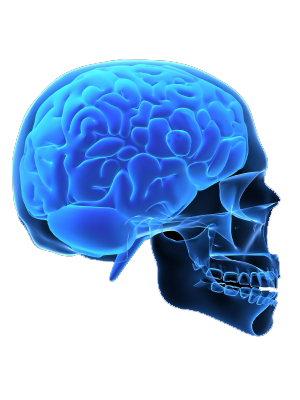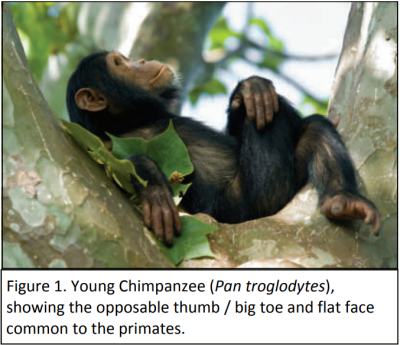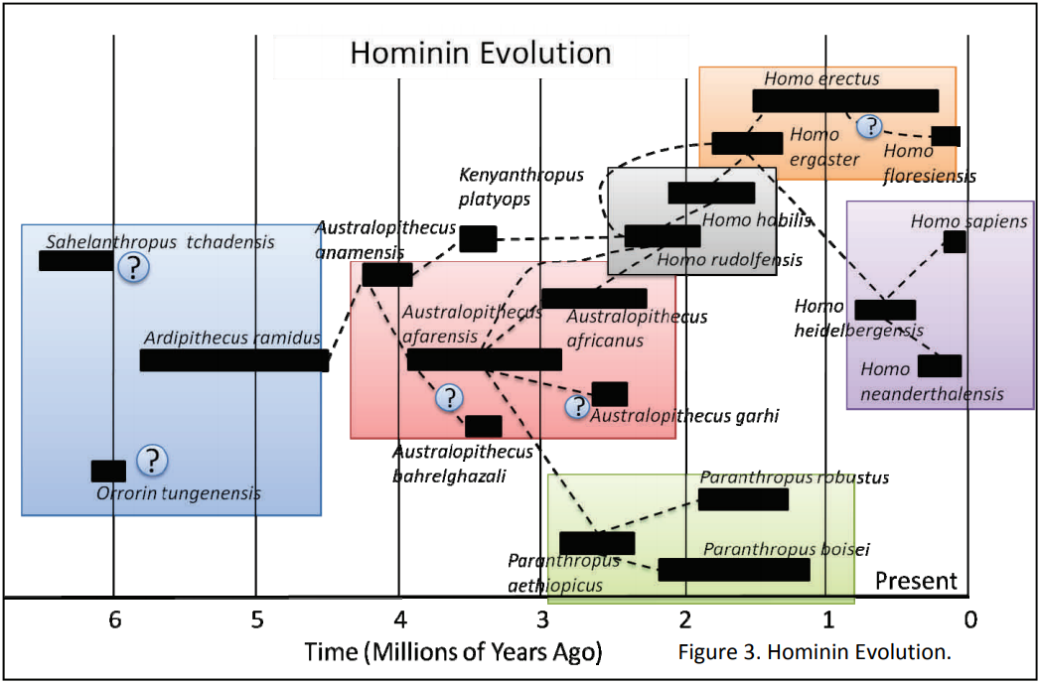The brain of modern Homo sapiens is a sophisticated organ with the capacity for complex and abstract thought, communication and metacognition (thinking about thinking). The evolution of this capability is linked to biological and cultural factors such as development of the brain as an organ and development of social complexity and cultural capabilities.
The evolutionary success of humans and their direct ancestors can be linked to selection that led to the development of intelligence. This is not the result of selection relating to one characteristic. Rather it is the selection for a combination of characteristics which collectively contribute to the development of intelligence, and the accompanying evolutionary success. Bipedalism, tool making, increased brain size, the emergence of language and the development of culture are key contributors to the success of the human species.
Human evolution is the process by which, over time, humans have changed to optimise the fit between the individual members of a population and their environment. Evolution of a species (macroevolution) and evolutionary change within a species (microevolution) operate to produce an organism that is matched or adapted to its environment; that match is not dependent on a particularly long or comfortable life for an individual, but rather on the successful passage of that individual’s genes to the next generation. So, in contrast to a modern human perspective where success is measured by a long and healthy life, evolutionary success is measured by successful reproduction.
All organisms on the planet today are here because their ancestors successfully reproduced. Lineages that did not do so are now extinct. This is the core concept of fitness, which is fundamental to evolutionary biology. Evolution is the process whereby a population changes over time to optimise fitness of its individual members within a particular environment – so Homo sapiens evolved by adaptations that maximised its fitness in the environments of eastern Africa, the region in which our species first emerged. Biological fitness for a human was – and still is – achieved by a strategy of supporting a small number of offspring to grow successfully to adulthood, reproduce and live long enough to support their own children reproducing successfully. Evolutionary pressures on our lineage operated to ensure this. Health and longevity beyond the reproductive period of the life course, or the period necessary to support offspring into adulthood, are not drivers in the process of evolutionary selection.







